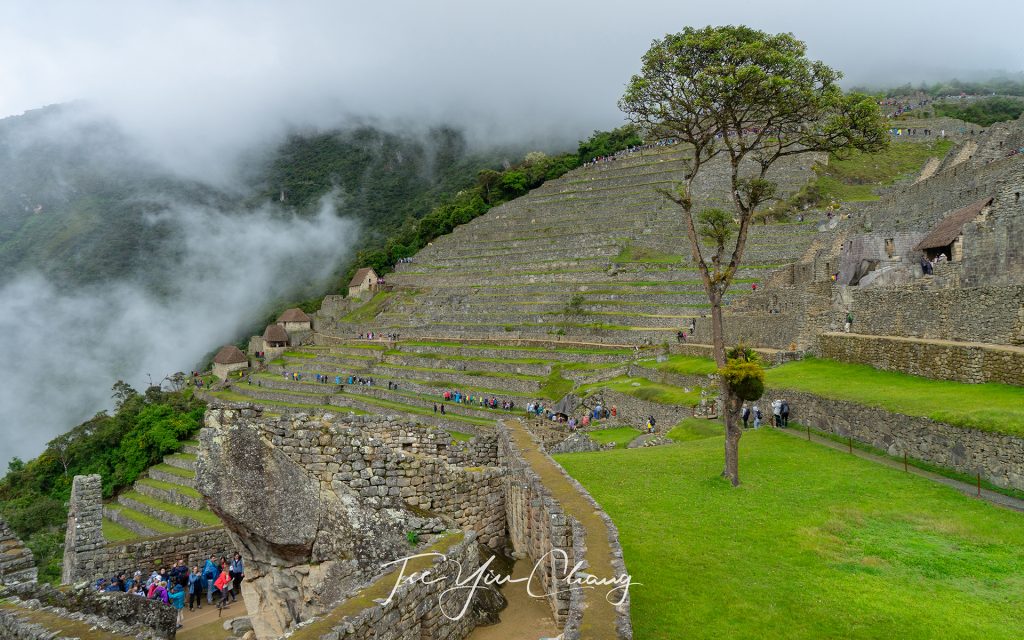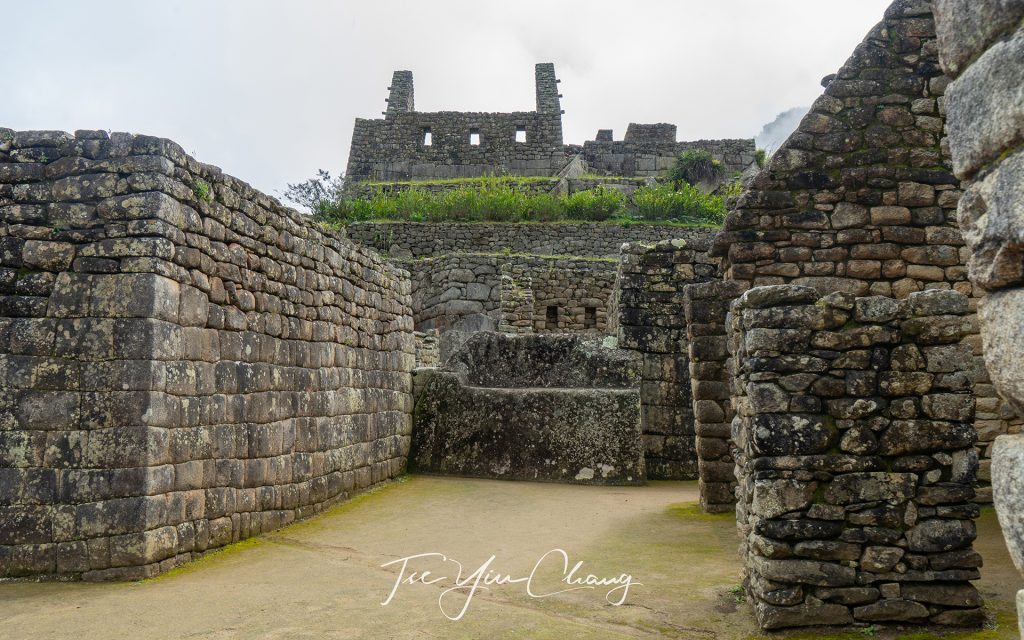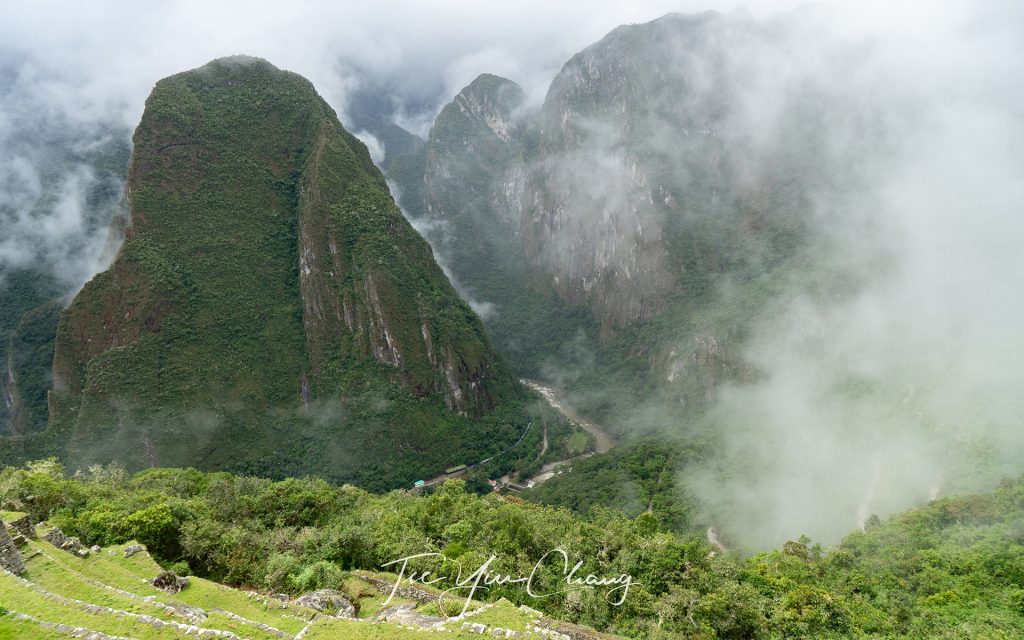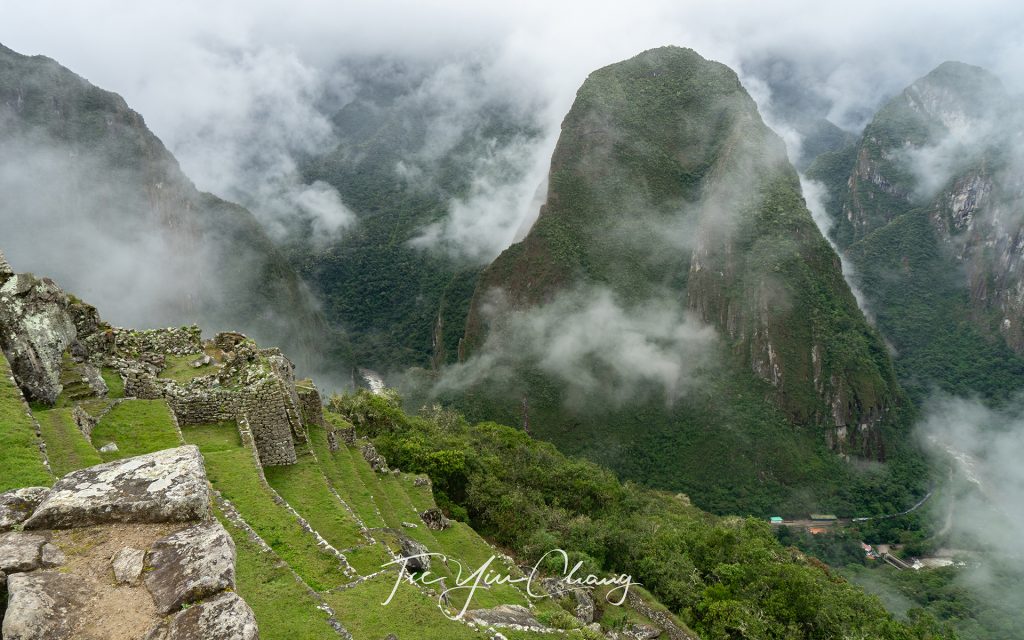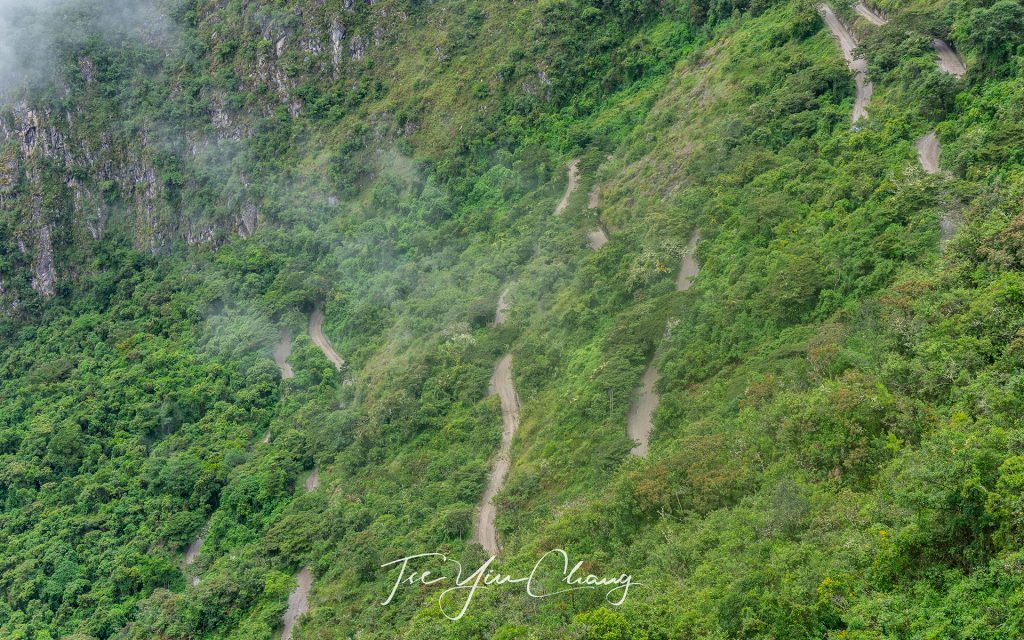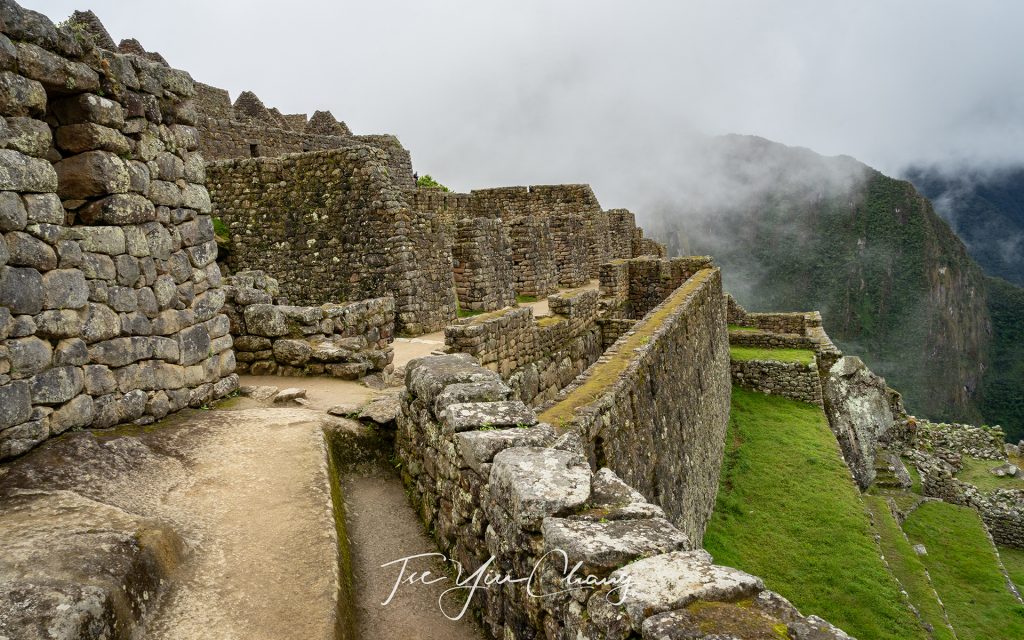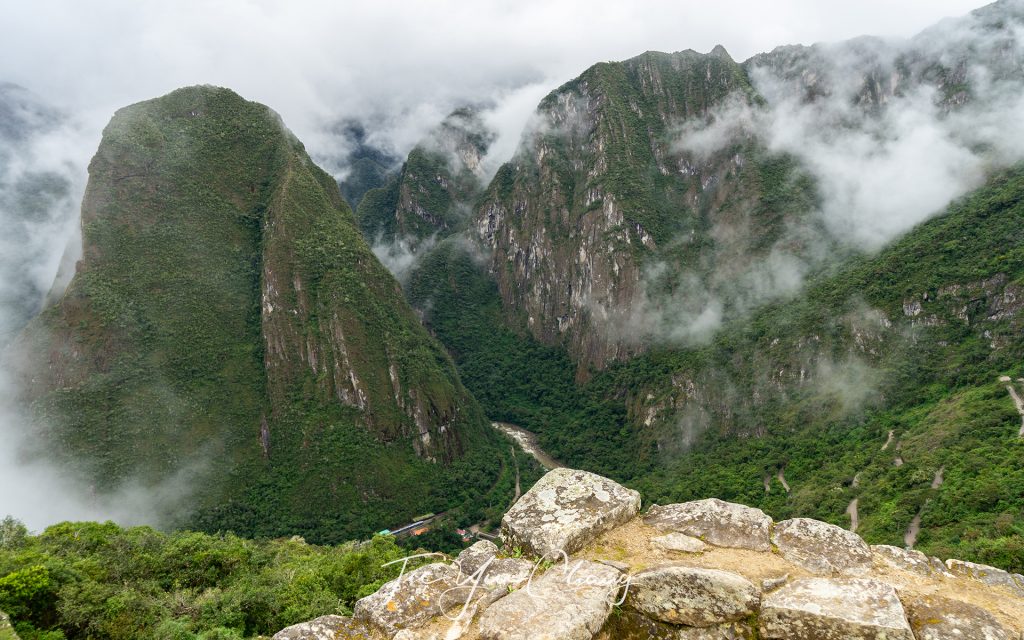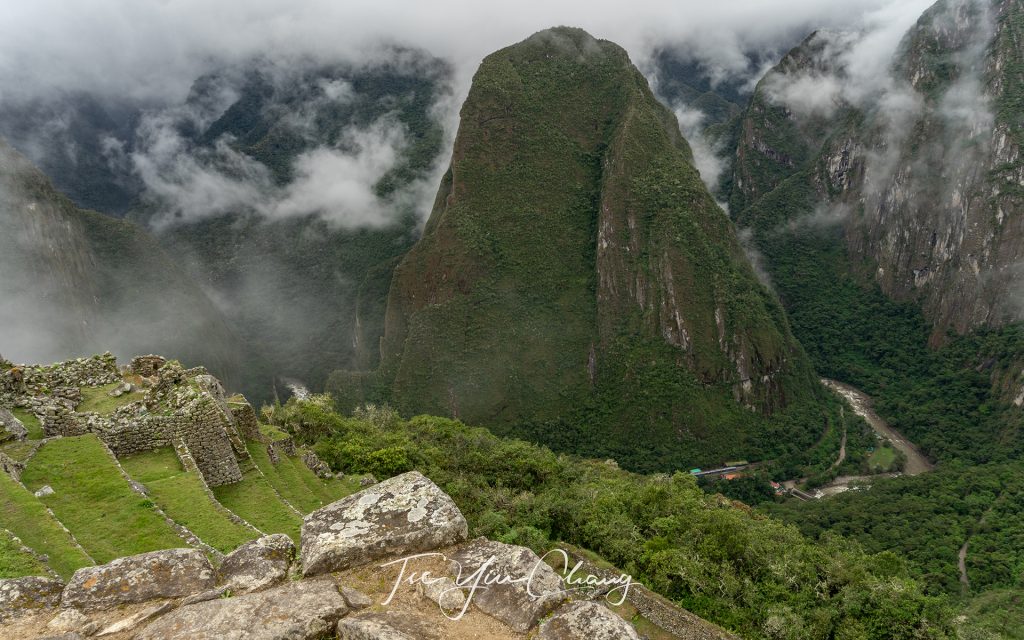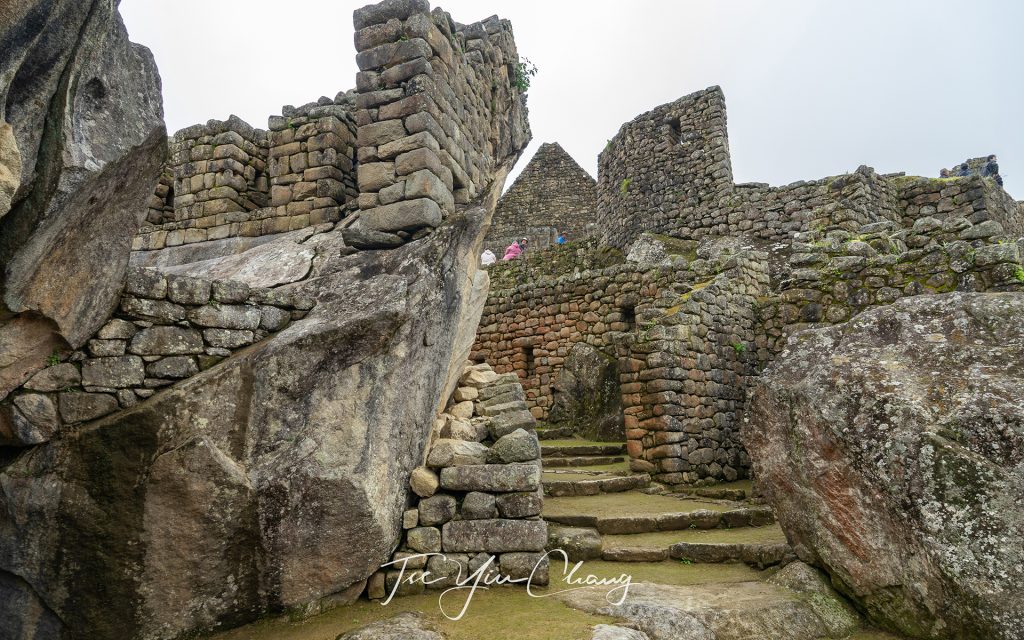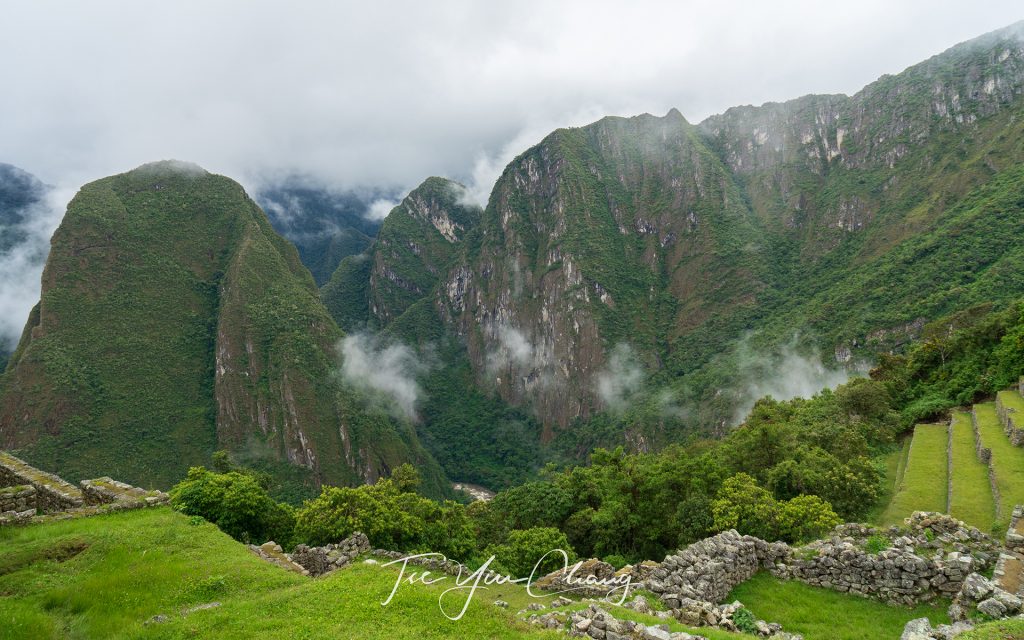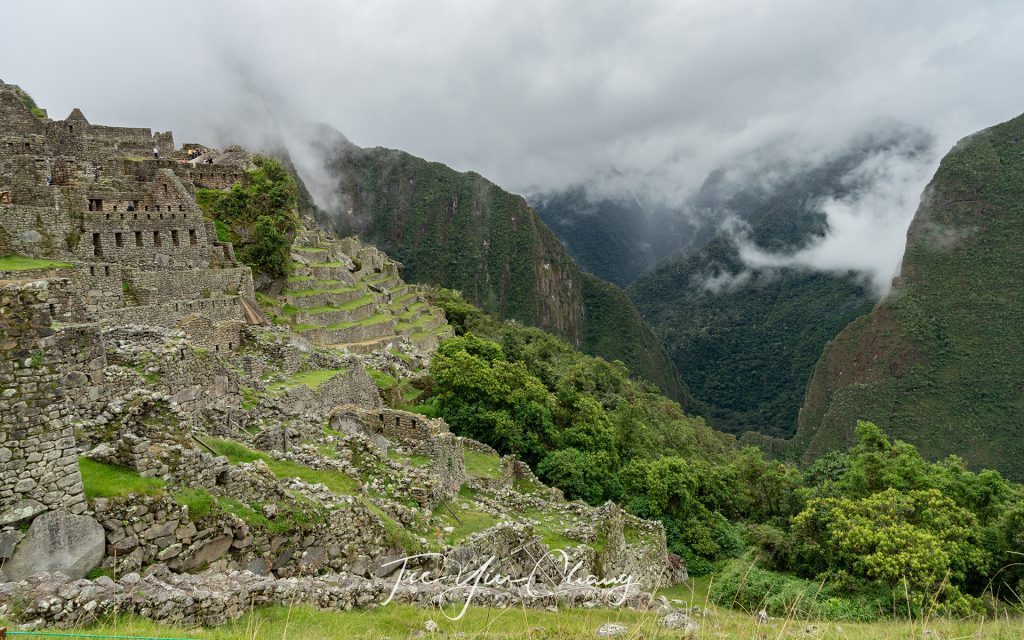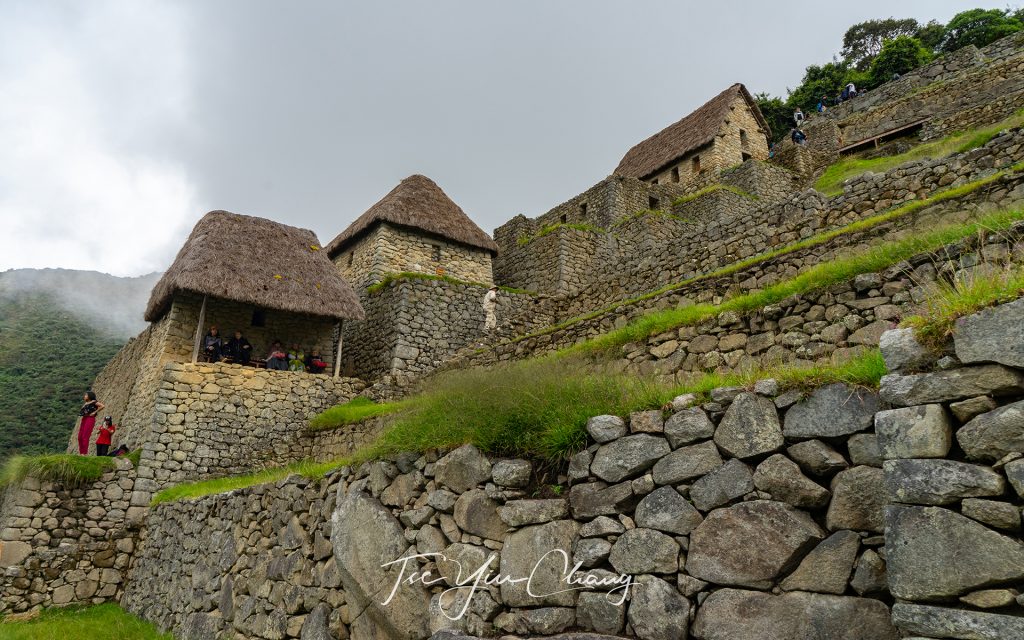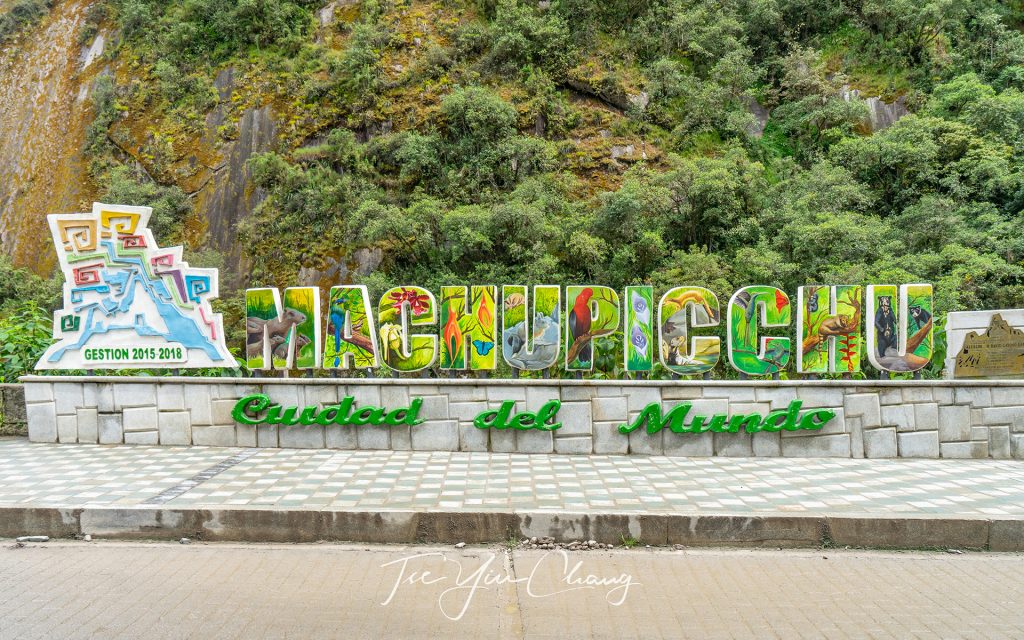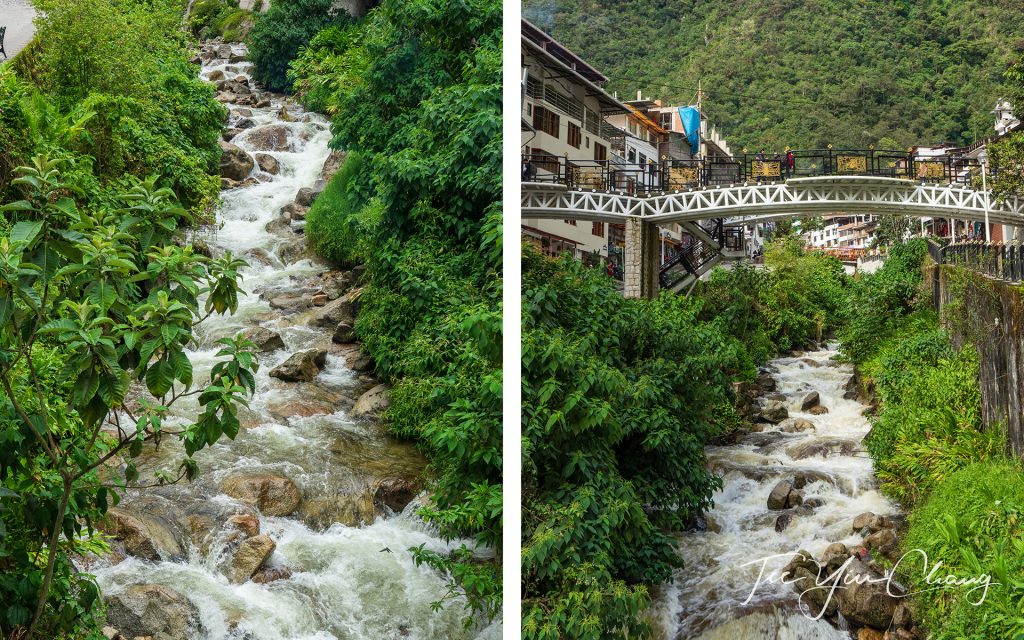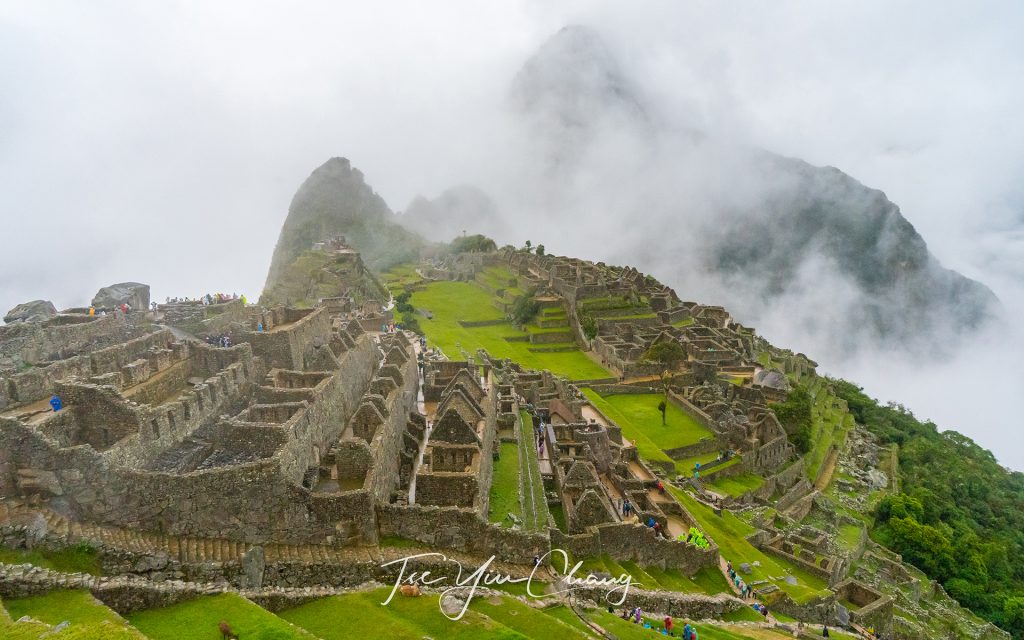
Pretty much everyone who visits Peru goes to Machu Picchu at some point. For many people it is the main reason for visiting the country. It is without doubt one of the most recognisable places in the world, and one of the most photographed. It is considered to be one of the new Seven Wonders of the World, as it is one of the most significant pieces of human patrimony.
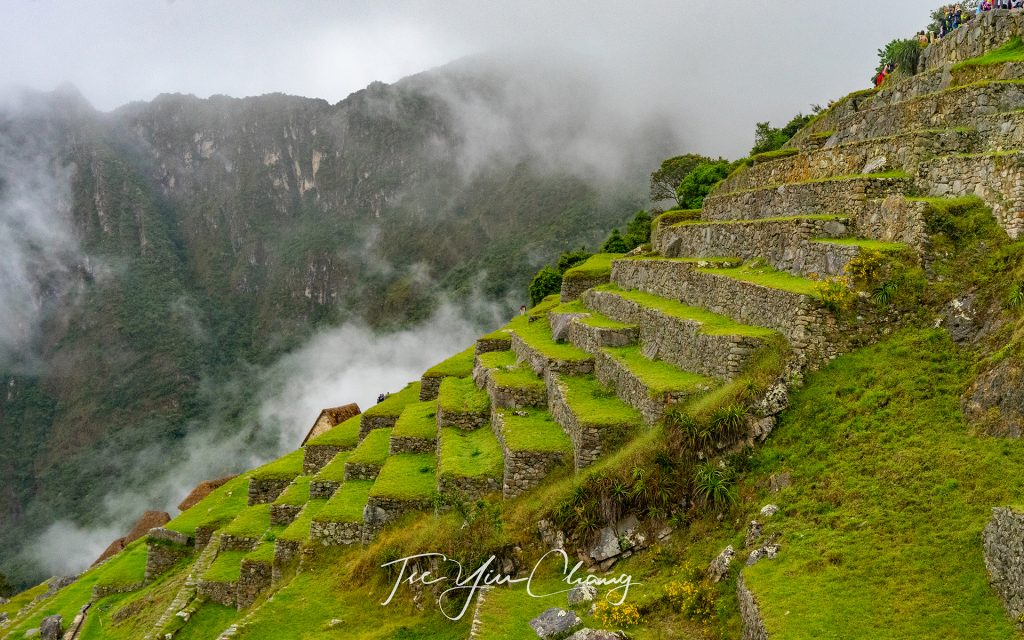
We too were making our way there, but we had taken the scenic route. We crossed the Altiplano by train and visited several other Inca sites; stopped at Cusco, Ollantaytambo and Pisac among others, and each had been breath-taking and deserving of some of Machu Picchu’s fame. Like everyone else however, we were looking forward to seeing the big one. There is a reason everybody wants to go to Machu Picchu.
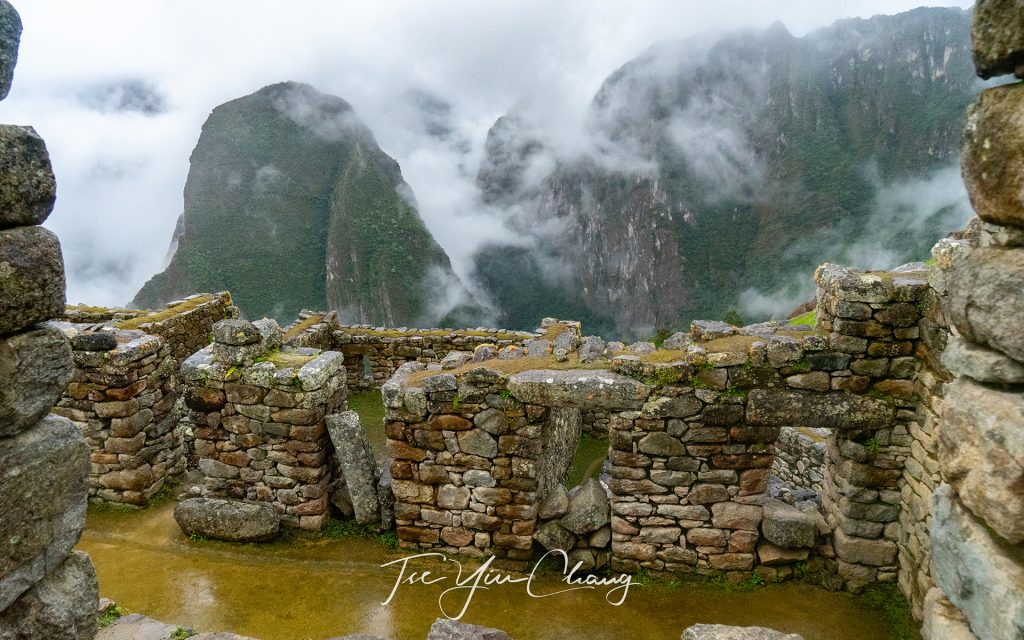
The nearest settlement is Aguas Calientes, and this is where we stayed overnight. After breakfast, we walked over to the tourist information centre where we met with our guide and caught the bus. Guides are mandatory when visiting Machu Picchu, a requirement set by the government. As well as providing visitors with some context, they also help ensure that the huge numbers of tourists are managed (thus protecting the site), and also provides employment for Peruvians. We had got a sense of how huge those numbers were while in Aguas Calientes, but it was rammed home as we waited for the bus. The queue was very, very long.
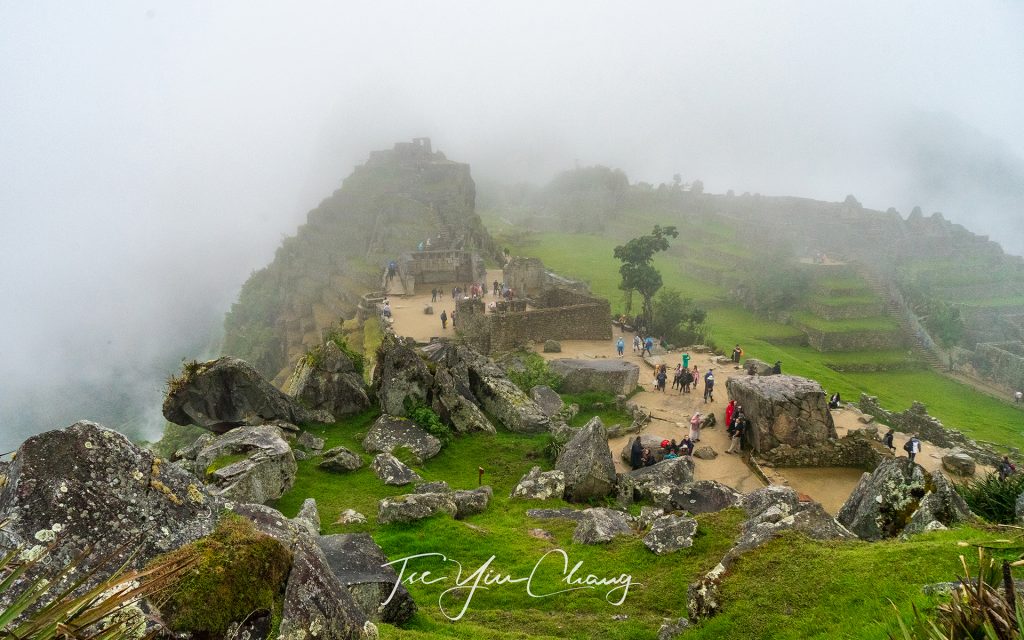
Machu Picchu is the historic site which gets by far the most attention in Peru. However, for the Inca who built it, this was far from their most important settlement. In fact, it was a relative backwater. The remote location, on the top of a mountain hidden up an inaccessible valley, is what makes it so spectacular, but it also made it a poor place to build a thriving city. Instead (clearly being a man who appreciated natural beauty), the Inca Emperor Pachacuti decided to build a personal estate to give himself a place to retreat from the pressures of ruling. At its height, Machu Picchu had a population of around 750 people, but this probably would have increased when Pachacuti visited.
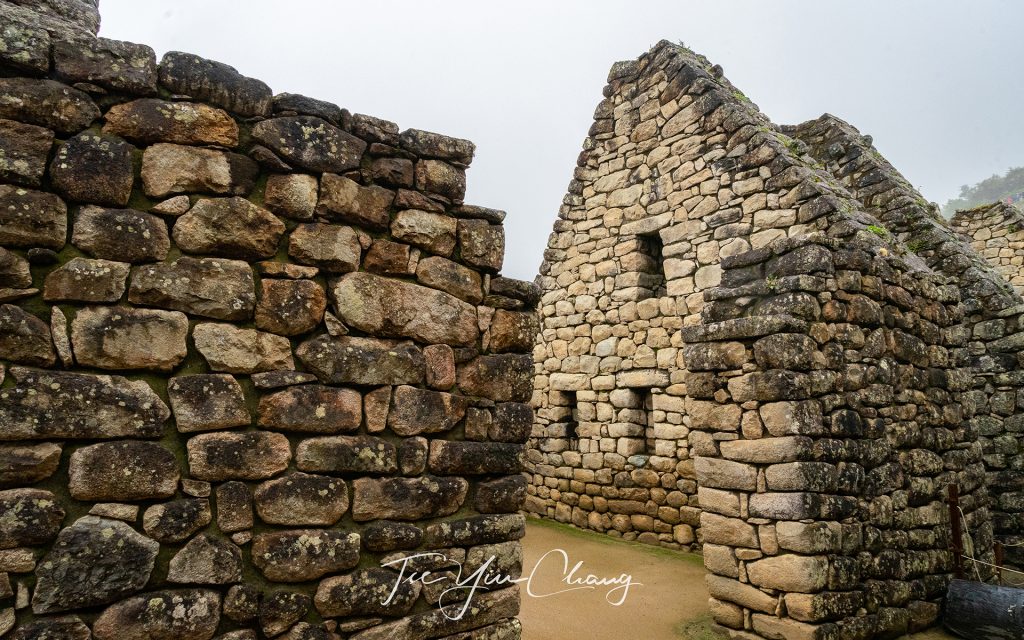
The weather on the morning we visited was overcast, thus making it the perfect temperature to go climbing up and down steep hills. As we climbed up to the site however, the clouds started moving in and when we reached the top, the rain started. As we wandered around the views were obscured by mist and being a photographer, I knew I was being denied some great shots. Despite this, we weren’t too disappointed because as the mist swirled around the jagged ruined walls, it added to the ethereal atmosphere of the place.
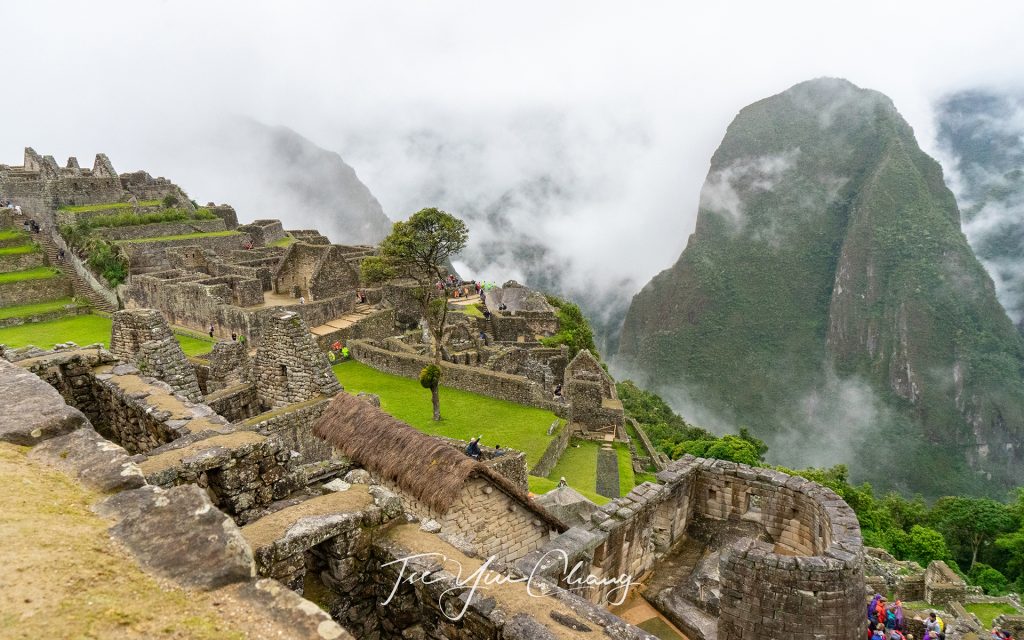
Our guide led us along the increasingly muddy paths which loop around the ruins. She showed us the settlement’s main square, the circular tower (most likely used as an observatory), and the sacred solar clock. We were shown the palace where the emperor would have stayed, the temple of the three windows and then the cemeteries. The upper part of the city is home to the palace and the sacred temples. Just below are the houses that the bulk of the population would have lived in as well as the grain warehouses. Amazingly, the Inca managed to carve out their stepped terrace farms even on these near vertical slopes. As you look down at the valley below, you can still see the stone embankments they built to give themselves scraps of flat land to grow crops on.
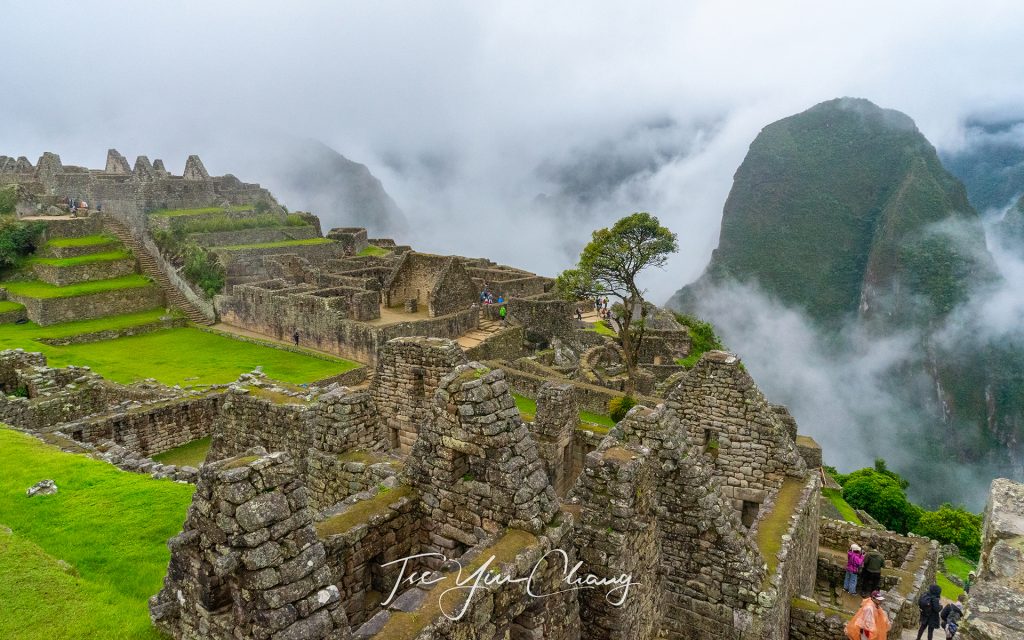
Despite the weather and the crowd, the majesty of Machu Picchu is undeniable, and it was clear that its UNESCO world heritage site status is more than justified. It is a magical, mysterious place that feels like something from a fantasy story. The American explorer, Hiram Bingham, must have found it even more so when he rediscovered it in 1911. He had the place all to himself (with the exception of his indigenous guide, of course). In fact he would have been one of just a handful of visitors since the site was abandoned by the Inca during the Spanish conquest hundreds of years before.
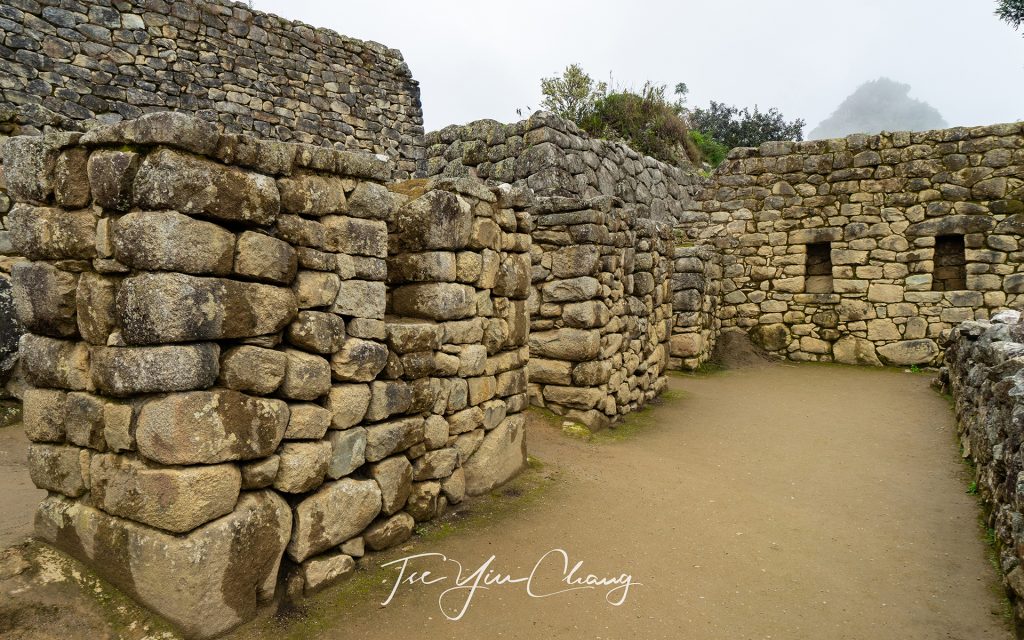
Bingham was a real life Indiana Jones, whose adventures are as fantastical as Machu Picchu itself. Coming from a family of missionaries in Hawaii, he set of for Chile in 1908 for a conference and instead of returning home, decided to wander through the jungles of Peru looking for lost Inca cities. Machu Picchu was not the first that he discovered, he was also the first to document the existence of Vilcabamba, also known as the Lost City of Inca. It was the city where the last Inca emperors hid and mounted a guerrilla campaign against the Spanish. He had heard rumours of another forgotten city, high up in the mountains, and eventually persuaded a villager named Melchor Arteaga from the valley below to take him there. Although others probably visited Machu Picchu before him, he was the first to document it and bring it to the world’s attention.
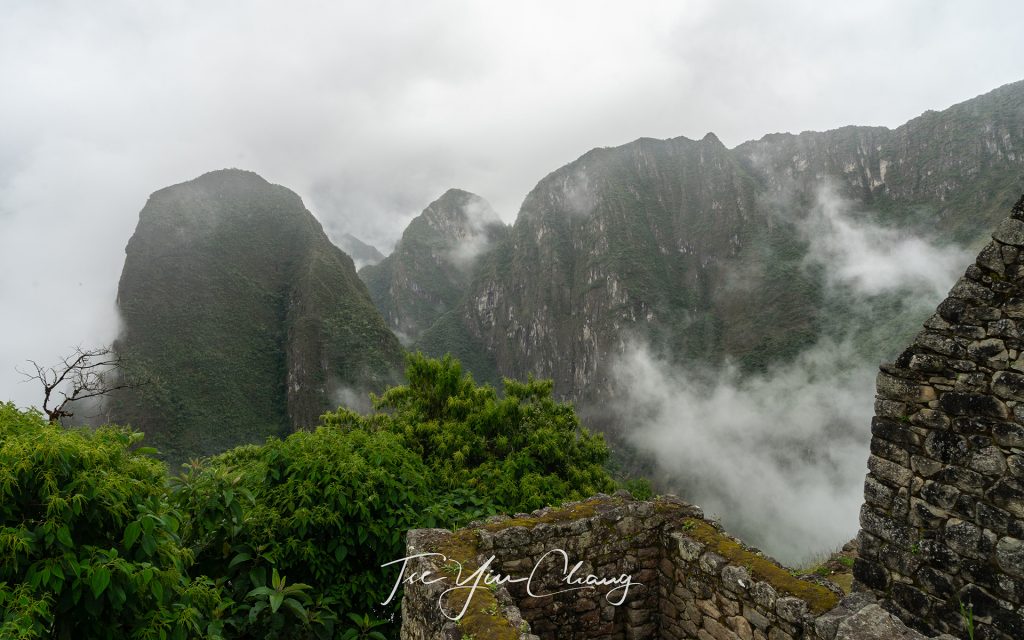
Hiram Bingham took a photo of the site from a viewpoint looking down over it. This is the same famous shot which hundreds of people now take every day. It shows the ruins, the sheer cliff faces on either side, and the equally sheer peak towering behind. This is Huayna Picchu, and if you really want the full experience, it can be climbed as well. To do so, however, you need to book well in advance – its narrow paths only allow a certain number of people at a time, and so access is controlled by the Peruvian Government. If you want to climb it, you have to book at least three months ahead.
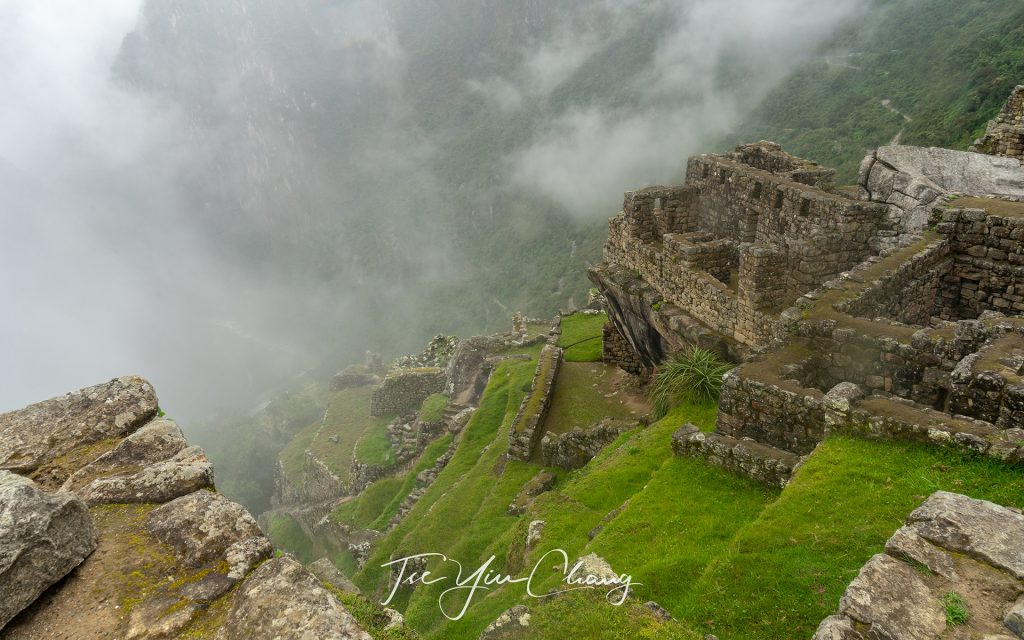
Another measure imposed to limit the impact of the huge number of visitors Machu Picchu generates, is to limit the time you can spend there to a maximum of four hours. If you really wanted to, you could spend a whole day up there taking it all in, but four hours is long enough to see everything, so we didn’t feel deprived. At around midday we headed back down to Aguas Calientes and enjoyed some lunch. Then we wandered around the souvenir markets while we waited for the late afternoon train back to Ollantaytambo. There, we met our driver and headed back to Cusco. While the weather had been against us, that couldn’t take away our delight at having visited such an awe inspiring place.
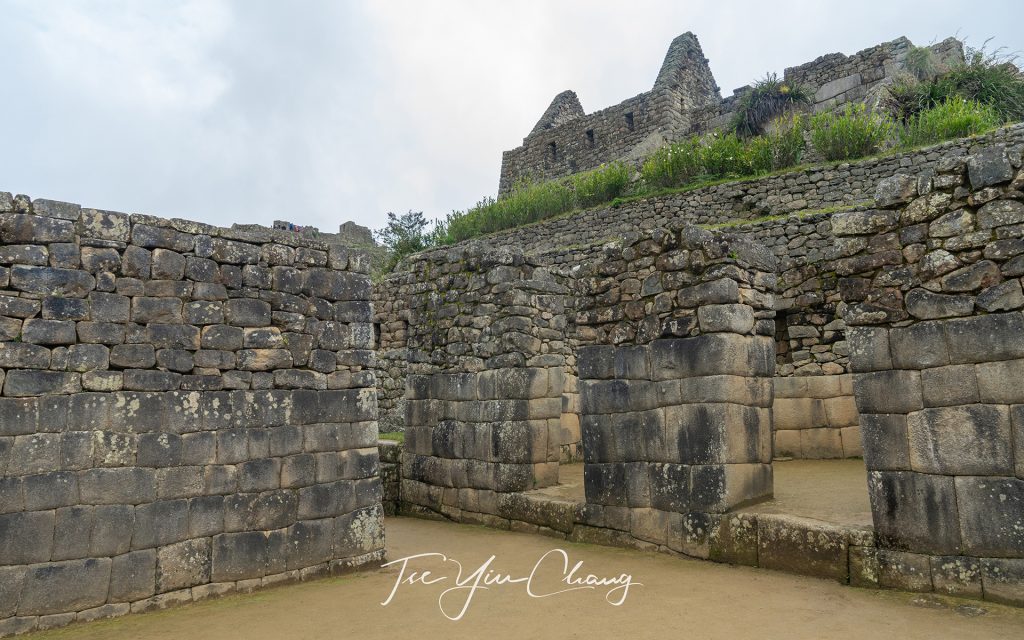
See also:
- A journey through the picturesque Andes by rail
- Exploring the capital of the Inca Empire – Cusco
- Sacred Valley – the gateway to Machu Picchu
